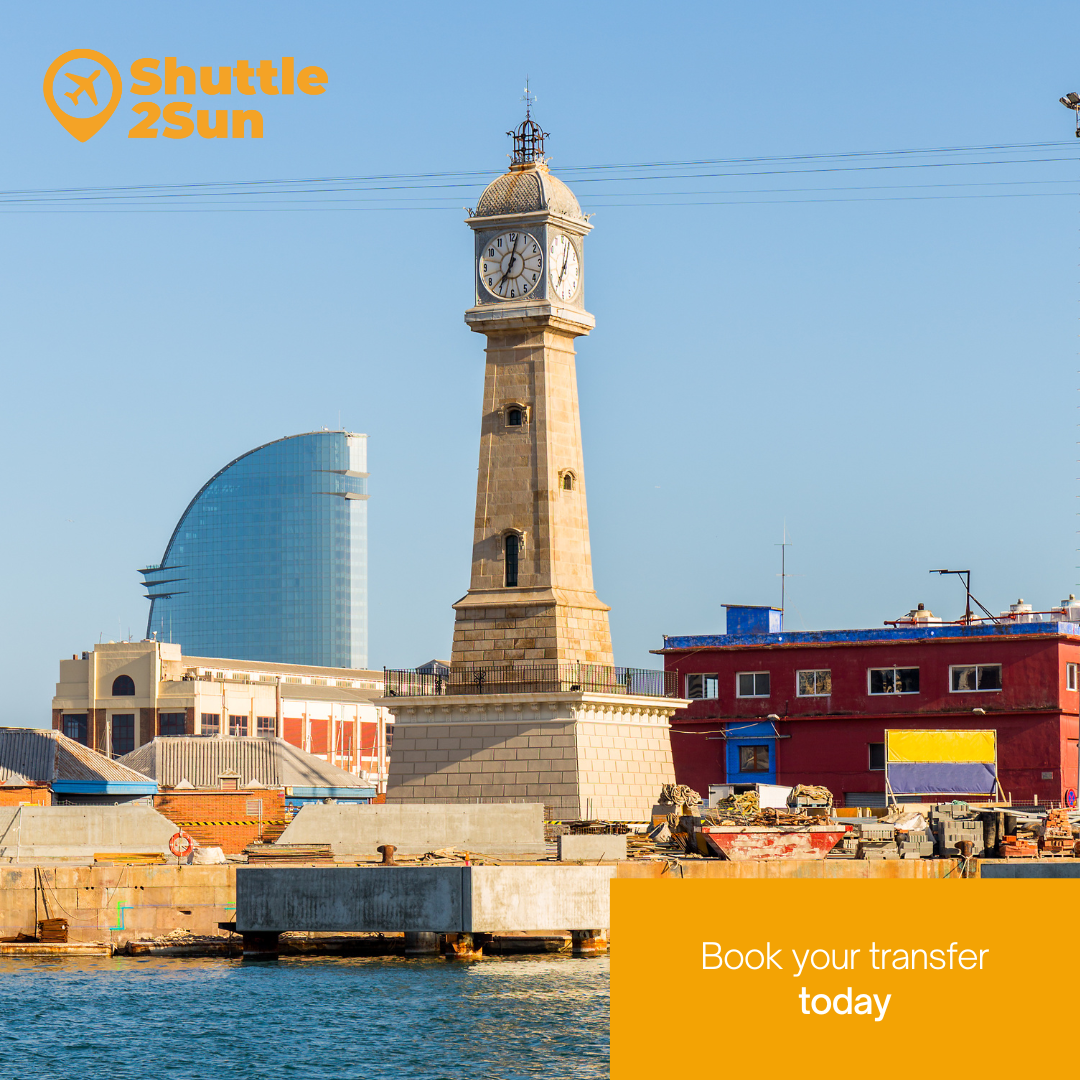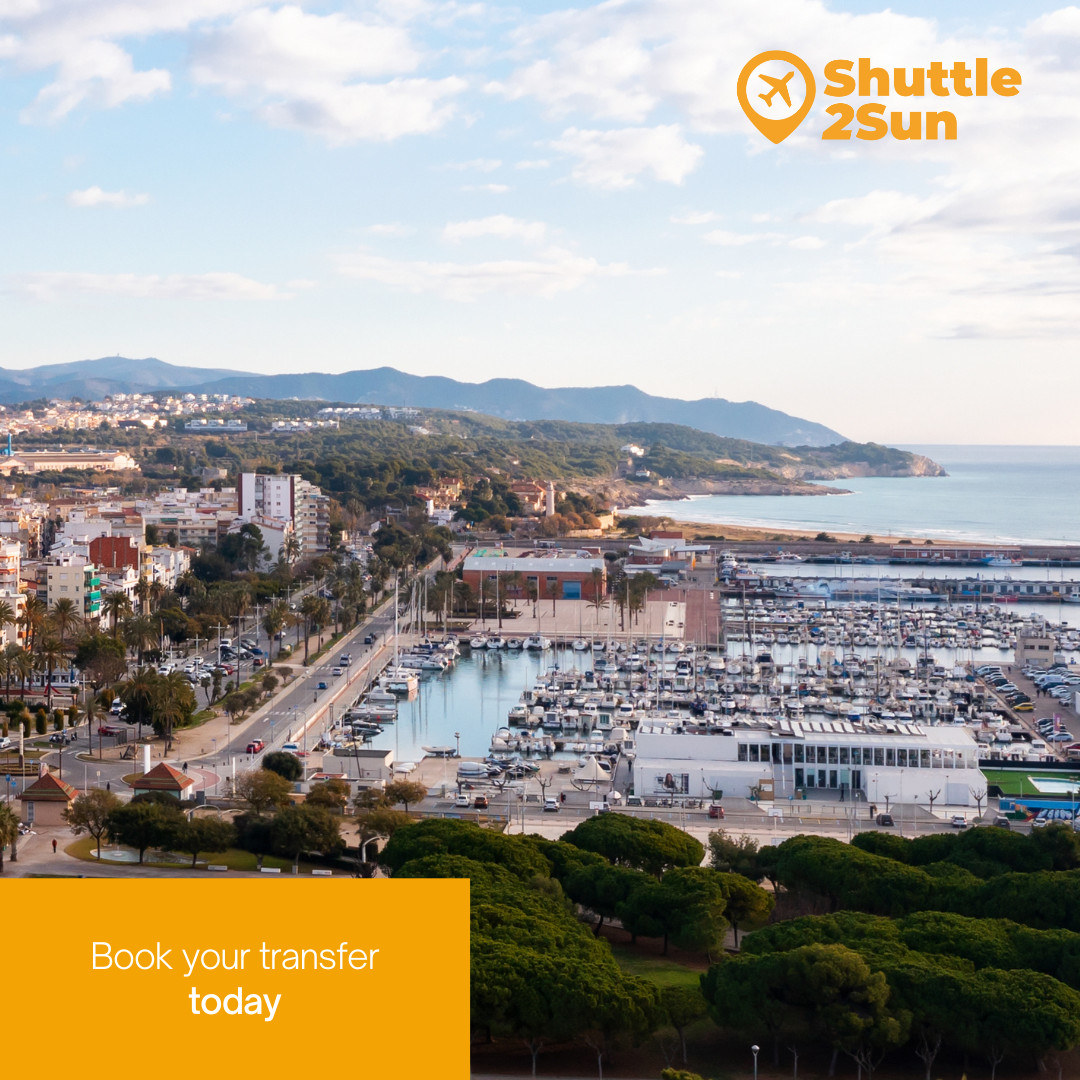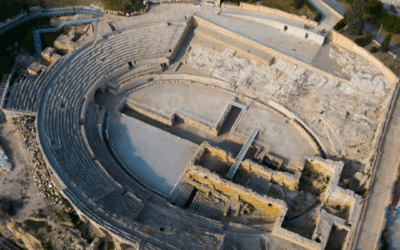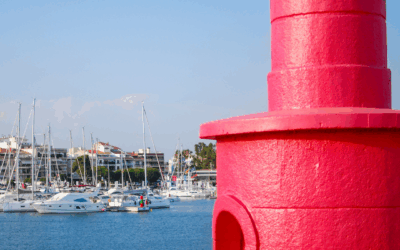The coast of Barcelona, in the centre of the Catalan coastline, lies between Costa Brava to the north and Costa Dorada to the south. It is an ideal destination for families and groups of friends who want to enjoy the calm of the sea and, at the same time, be very close to the Catalan capital.
These destinations on the coast of Barcelona, such as Calella de Mar, L’Hospitalet de Llobregat and Vilanova i la Geltrú, have an extensive tourist offer for all kinds of public, but also other unknown resources that make visitors enjoy themselves, such as their lighthouses. If you would like to discover the lighthouses on other parts of the Catalan coast, we encourage you to read our articles “The most beautiful lighthouses on Costa Dorada” and “The most beautiful lighthouses on Costa Brava“.
If you visit any of these places, you have at your disposal Shuttle2Sun‘s shared transfer services and private transfer services, low-cost and sustainable, from Barcelona airport, Barcelona port, Reus airport, Girona airport and Camp de Tarragona AVE train station.
The coast of Barcelona
To understand the function of these lighthouses, you must first get to know the beaches that make up the long coastline, which is more than 100 kilometres long, from Garraf region in the south, through Baix Llobregat, Barcelona, and on to Maresme region.
The main towns are Vilanova i la Geltrú, Calella de Mar and L’Hospitalet de Llobregat; as well as Sitges, Malgrat de Mar, Canet de Mar, Castelldefels, Mataró, Sant Pol de Mar, Santa Susanna and Arenys de Mar.
We cannot forget the city of Barcelona, which presides over the coast, bathed by the Mediterranean Sea.
These municipalities boast beaches with calm waters and excellent quality, such as, for example, Platja de La Fragata, one of the most popular in Sitges; Platja de La Pineda, in Castelldefels, which has extraordinary dunes; Platja de La Conca, in Malgrat de Mar, a natural space that stands out for its almost virgin landscape; or Platja de Sant Sebastià, one of the longest and busiest in Barcelona.
Lighthouse of Calella de Mar
Now that we know some of the details of the coast of Barcelona, we can explore the importance of its lighthouses.

One of the most characteristic ones, located to the north of this stretch of the coast, is Calella de Mar lighthouse, located on the highest point of the small mountain of Capaspre, at a height of about 50 metres.
In the place where the lighthouse stands today, there was a watchtower and defence tower, which was used to watch out for the possible arrival of Algerian pirates. Over the centuries, and due to the need for an infrastructure to help sailors and fishermen, it was decided to build the famous Calella lighthouse, which was commissioned in 1859. The works were directed by the engineer Marià Parellada. It is worth mentioning that its operation was not electrified until 1927, leaving behind the use of paraffin and petroleum, and, even earlier, pressurised oil.
We cannot forget the magnificent views that this lighthouse offers, being one of the most visited places by residents and tourists, especially in summer, to enjoy the great panoramic view of the coastline of Calella de Mar at sunset. From this privileged spot, you can also make out Parc Natural del Montnegre i Corredor, a large green space of some 15,000 hectares, which separates the coast from the Catalan inland, and where you can find some of the most characteristic fauna and flora of the area.
Remember that with Shuttle2Sun‘s shared transfer services and private transfer services, low-cost and sustainable, you can get to Calella de Mar from Barcelona airport, Barcelona port, Reus airport, Girona airport and Camp de Tarragona AVE train station.
If you want to know more about this town in Maresme region, don’t miss our article “Everything you need to know if you visit Calella“. In it, we explain its history, from Roman times, as well as its most outstanding monuments, such as Les Torretes, located next to the lighthouse; Dalmau Park; and its beaches.

Llobregat Lighthouse
You probably didn’t know that one of the oldest lighthouses in Catalonia was located in L’Hospitalet de Llobregat, just a few kilometres from Barcelona. It is known as Farola del Llobregat (Llobregat lighthouse) and was active until the late 1960s.
In the middle of the 16th century, Torre del Cap del Riu Llobregat was built to protect against pirates and corsairs who used to enter the mouth of Llobregat River to gain access to the territory.
Centuries later, in 1852, the current lighthouse was built to warn sailors of the sand that accumulated at the mouth of the river. In the 1920s, the land on which the lighthouse stands became part of Barcelona port.
Torre del Rellotge and Montjuïc lighthouse, in Barcelona
Another of the oldest lighthouses on the Catalan coast is Torre del Rellotge (Clock Tower), located on Moll de Pescadors de Port Vell, in Barcelona. It was built in 1772 by the Spanish military engineer Jorge Próspero de Verboom.
Although it retains its pyramidal structure from its inauguration, the clock that crowns this building was placed many years later, when it ceased to serve as a lighthouse, with the recent construction of the Montjuïc lighthouse.
It is worth noting that, beyond its purpose as a lighthouse, this building was a key reference point, as a geodesic point, for the scientist Pierre François André Méchain to create the international decimal metric system.
Montjuïc lighthouse also deserves to be mentioned, as it replaced Torre del Rellotge and Farola del Llobregat. It is in a spot that is difficult to access, on the slope of Montjuïc mountain, specifically in Morrot area. The lighthouse we find today was built in 1925, although until it was commissioned, a provisional one was installed with an oil lamp, which was replaced by an incandescent lamp in 1915.
Sant Cristòfol lighthouse, in Vilanova i la Geltrú
Finally, don’t miss Sant Cristòfol lighthouse in the town of Vilanova i la Geltrú, in the province of Barcelona. Since the mid-19th century, this town has had this luminous signpost for navigators, although its structure was gradually modernised until 1905, when the current lighthouse was built. Nowadays, the facilities house a museum dedicated to the town’s seafaring past.
If your trip is to Calella de Mar, Barcelona, L’Hospitalet de Llobregat or Vilanova i la Geltrú, don’t forget to visit its magnificent lighthouses. Remember that you have at your disposal Shuttle2Sun‘s shared transfer services and private transfer services, low-cost and sustainable, from Barcelona airport, Barcelona port, Reus airport, Girona airport and Camp de Tarragona AVE train station.



